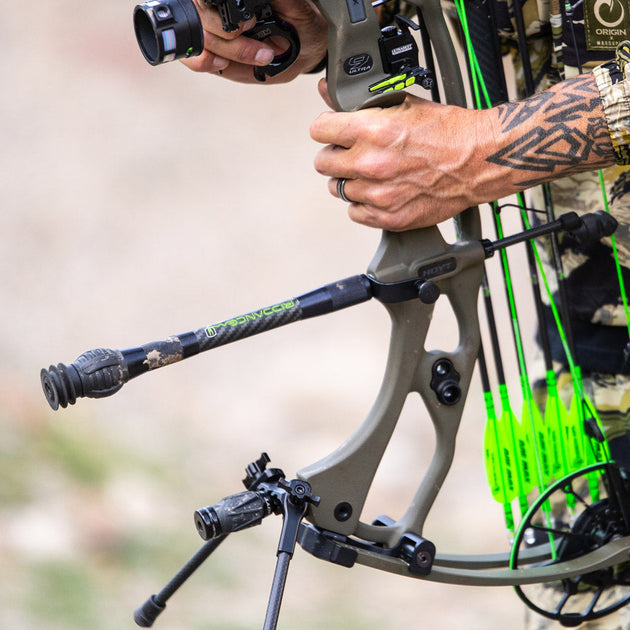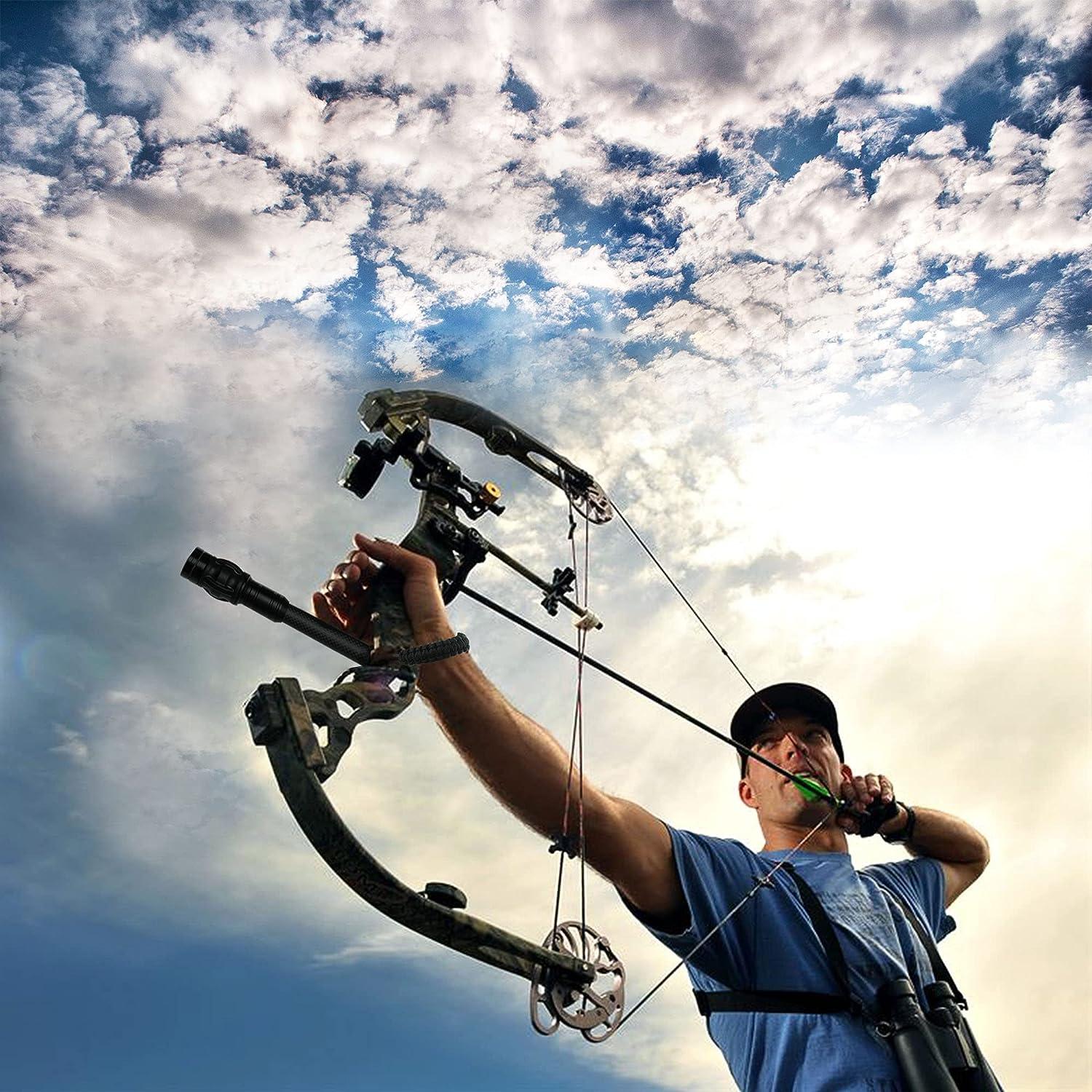The Ultimate Guide to Choosing the Right Archery Stabilizer for Improved Precision
Archery is a sporting activity that requires accuracy and accuracy, and picking the appropriate equipment is essential for attaining ideal results. Amongst the different accessories available, an archery stabilizer plays a considerable function in improving accuracy. Nonetheless, with numerous alternatives on the marketplace, it can be frustrating to figure out which stabilizer is the best fit for your needs. In this detailed overview, we will certainly check out the key variables to consider when selecting an archery stabilizer for improved accuracy. From discovering the optimal length to comprehending the different styles and products, we will look into every little thing you require to know to make a notified choice. Whether you are an experienced archer looking to update your equipment or a novice looking for guidance, join us on this journey as we untangle the secrets to choosing the best archery stabilizer.
Length: Discovering the Ideal Stabilizer Size
Identifying the ideal stabilizer size is critical when choosing an archery stabilizer for optimum efficiency. The size of a stabilizer directly affects the equilibrium, security, and precision of the bow. A stabilizer that is also long can make the bow feel hard and top-heavy to regulate, while a stabilizer that is also short may not supply adequate stability and dampening of vibrations. Locating the right length needs considering factors such as the archer's shooting design, bow weight, and personal preference.
A longer stabilizer, commonly ranging from 8 to 12 inches, can provide better stability and decrease bow torque. This is particularly beneficial for archers who shoot with a high draw weight or those who tend to torque the bow throughout the shot. The included length aids to disperse the weight evenly and counterbalance any kind of torque or movement.
On the various other hand, a shorter stabilizer, generally between 4 to 7 inches, offers a lot more maneuverability and quicker feedback. It is favored by archers who fire with a lower draw weight or those who call for more flexibility, such as seekers or 3D shooters. The shorter size permits for much easier activity through tight areas and faster changes.
Ultimately, the ideal stabilizer size refers personal preference and shooting design. It is advised to explore various sizes and observe the results on stability and precision. Consulting with skilled archers or professionals can also offer beneficial understandings and suggestions.
Weight: Identifying the Appropriate Stabilizer Weight
After considering the optimal stabilizer length, the next crucial variable to consider when choosing an archery stabilizer is figuring out the proper stabilizer weight - archery stabilizer. The weight of the stabilizer plays an important duty in enhancing accuracy and stability during the shot
The weight of the stabilizer affects the balance and control of the bow. A larger stabilizer can offer increased stability and control, especially for shooters with a propensity for unsteady hands or irregular shots. It helps to absorb the resonances and recoil produced by the bow, reducing torque and minimizing the effect on the arrowhead's trip.
On the other hand, a lighter stabilizer enables a quicker and a lot more receptive bow. It can be advantageous for shooters who prioritize ability to move and speed over stability. Lighter stabilizers likewise decrease fatigue during lengthy shooting sessions or competitions.
To establish the ideal stabilizer weight for your requirements, it is crucial to consider your capturing design, physical toughness, and bow arrangement. Explore different weights and observing the influence on your capturing efficiency is essential to finding the excellent equilibrium.
Eventually, the ideal stabilizer weight will certainly differ for every individual archer. It is advised to begin with a moderate weight and make changes based on individual preference and shooting results. Remember, the objective is to accomplish a stable and regulated shot, while additionally keeping comfort and convenience of use.
Materials: Selecting the Right Materials for Resilience and Efficiency
When selecting an archery stabilizer, it is vital to thoroughly think about the materials utilized in its construction to make sure longevity and enhance efficiency. The choice of products can greatly affect the overall top quality and effectiveness of the stabilizer.
One of the most commonly used materials for stabilizers is carbon fiber. In addition, carbon this contact form fiber stabilizers are immune to temperature level adjustments and are much less most likely to warp or bend over time.
An additional popular material for stabilizers is aluminum. Aluminum stabilizers are known for their toughness and strength. They offer outstanding moistening capabilities, decreasing the amount of shock and resonance moved to the shooter's hand. Light weight aluminum stabilizers additionally use a vast array of customization choices, allowing archers to adjust the weight and size to match their choices.
Some stabilizers are created utilizing a combination of products. As an example, a stabilizer might have a carbon fiber core wrapped in an aluminum covering. This hybrid style integrates the best top qualities of both materials, offering optimum stability, toughness, and performance.
Layout: Recognizing the Different Stabilizer Styles and Their Results
Considering the materials made use of in archery stabilizers, it is essential to currently explore the various designs of stabilizers and their corresponding impacts. The layout of an archery stabilizer plays a crucial function in enhancing precision and minimizing vibration throughout check over here the shot. There are a number of various styles offered in the marketplace, each with its own distinct features.

One more preferred style is the side bar stabilizer. This layout includes attaching a short pole to the side of the bow, parallel to the major long pole. Side bar stabilizers help in counteracting the weight of devices, such as quivers or views, and supply added security to the bow.
Some stabilizers feature flexible weights. These stabilizers permit archers to make improvements the balance and feeling of their bows by adding or getting rid of weights. This feature is especially beneficial for archers that prefer a specific weight distribution or wish to trying out different setups.
Furthermore, some stabilizers integrate wetting modern technology to minimize vibration and noise. These stabilizers frequently have integrated dampeners or make use of products that soak up resonances, causing a smoother and quieter shot.

Devices: Discovering Extra Accessories for Improved Stability
To further boost stability in archery, extra accessories can be made use of. These accessories are made to operate in combination with the archery stabilizer to offer an also greater degree of security and accuracy. One such device is the V-bar or the side stabilizer mount. This device allows for the accessory of a 2nd stabilizer, which assists to lower and balance the bow torque. By distributing the weight equally on both sides of the bow, the V-bar helps to lessen any type of undesirable movement during the shot.
One more device that can boost stability is a bow sling. A bow sling is a band that affixes to the bow and enables the archer to maintain an unwinded hold on the bow take care of without the fear of dropping it (archery stabilizer). This relaxed hold assists to lower muscular tissue tension and enables a much more regular and steady shot
Furthermore, a stabilizer weight system can be utilized to make improvements the balance and stability of the bow. These weight systems typically contain small weights that can be added or removed from the stabilizer to adjust the equilibrium factor of the bow. By locating the optimum equilibrium factor, archers can accomplish a much more exact and secure shot.
Verdict
In verdict, choosing the best archery stabilizer entails taking into consideration aspects such click site as size, weight, materials, layout, and extra accessories. The ideal stabilizer length and weight will certainly depend on private preferences and shooting design.
Figuring out the optimal stabilizer length is critical when choosing an archery stabilizer for optimal efficiency. A stabilizer that is too long can make the bow really feel difficult and top-heavy to manage, while a stabilizer that is too brief may not provide sufficient security and dampening of vibrations - archery stabilizer.Taking right into account the products made use of in archery stabilizers, it is important to currently delve right into the various designs of stabilizers and their corresponding impacts. Side bar stabilizers assist in reversing the weight of accessories, such as sights or quivers, and give additional security to the bow
These weight systems commonly consist of little weights that can be included or removed from the stabilizer to change the equilibrium point of the bow.